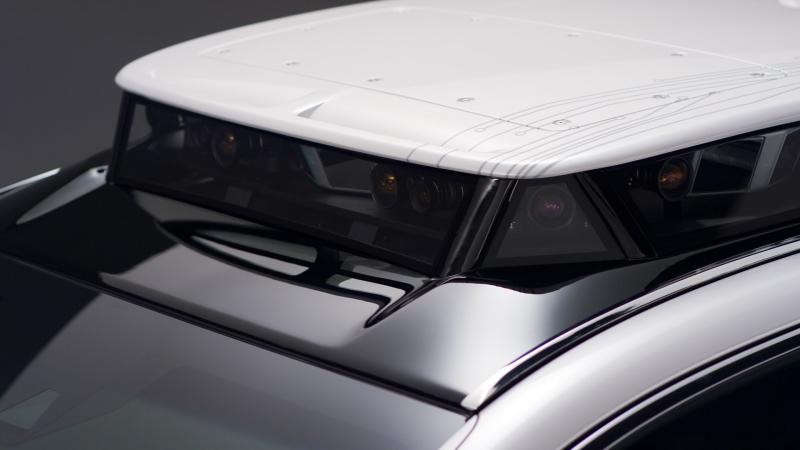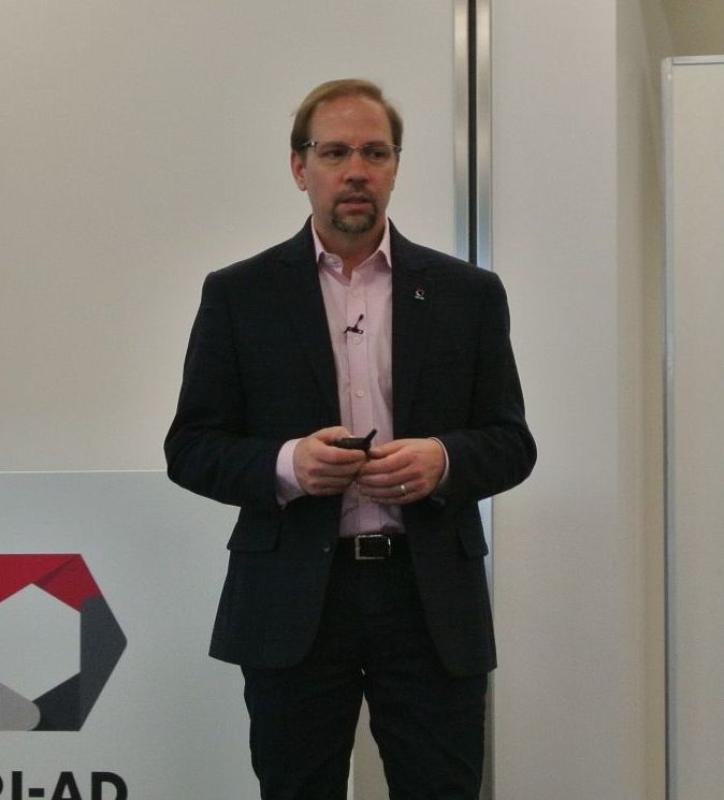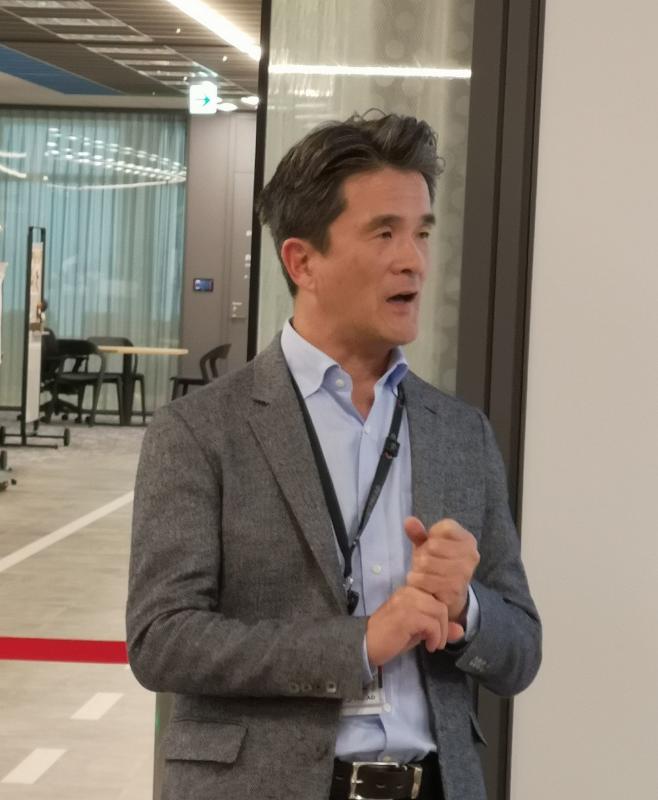Responsible for advanced development of software for Toyota’s automated driving initiative, TRI-AD’s researchers in their twentysomething or thirtysomething are more casually dressed in T-shirts and jeans.
Even senior management of the institute who still wear suits, have done away with neckties to blend in with the Ikea-ish open office concept and more relaxed work environment which is said to be better at generating fresh and creative ideas.
Last month, TRI-AD’s fellow research centre and collaborator, the US-based Toyota Research Institue (TRI), announced that its TRI Platform 4 (P4) autonomous driving car would be available for public rides from July to September next year in conjunction with Tokyo Olympic and Paralympic Games 2020 which Toyota is a partner.
This move puts Toyota and its luxury arm Lexus closer towards the mass deployment of self-driving cars.

Toyota Motor Corp Frontier Research Centre chief officer Nobby Koga with two Human Support Robots (HSR).
At the recent Tokyo Motor Show 2019, Toyota unveiled a slew of automated and disabled-friendly driving concepts as well as human assisting robots under its “Mobility for All” initiatives.
The P4 public rides offered as “Mobility as a Service” will be held in Tokyo’s Odaiba district which has a challenging combination of pedestrians, vehicle traffic, diverse road infrastructure and tall glass buildings to demonstrate the capabilities of Toyota’s automated driving technology.
The P4, which is based on the Lexus LS 500h, has sensors and cameras mounted around the car and its roof, claims a SAE Level 4 self-driving capability.
The intelligent luxury sedan can drive on its own without driver intervention under selected conditions but is required by Japanese laws to have a human driver present to take over if necessary.
TRI has also been testing P4 in its closed-course test facility in Ottawa Lake in Michigan, the US.
In addition to the “Chauffer” self-driving capability, the P4 also has the “Guardian” active safety application that assists drivers from getting into accidents.

The TRI-P4 roof has an array of sensors and cameras.
In a media tour held on the sidelines of the Tokyo Motor Show, TRI chief executive officer Dr Gill Pratt said new technologies that are being developed should amplify human capabilities and not replace them.
He said the aged and disabled are still able to perform most work by themselves, and that tasks that they could not do should be aided by robots.

Toyota Research Institute - Advanced Development (TRI-AD) CEO Dr James Kuffner.
TRI-AD chief executive office Dr James Kuffner said the institute’s goal was to create world-class technology and build the safest car in the world.
He said the P4 is a “supercomputer” on wheels with a 360-degree surround multi-modal sensor configuration.
The vehicle also been designed to have its software updated over-the-air as to enable it to acquire new capabilities.
The P4 is also supported by visual-based high-definition maps and localisation data for more accurate autonomous driving.
TRI-AD chief technical officer Ken Koibuchi said Toyota’s ideal world would be where everyone could move around freely, safely and efficiently.

Toyota Research Institute - Advanced Development (TRI-AD) Ken Koibuchi.
He said road fatality rates had dropped substantially over the last two decades due to better vehicle technologies.
However, road accidents were still not eliminated yet due to human errors along with reduced driving capabilities of the aged among other factors.
He said that for autonomous driving to work well, the system developed has to substitute human driving process by recognising its surroundings, integrate the information with maps, plan the driving course and control the vehicle which required fast computing and advanced software.

Toyota Field Support Robot (FSR).
Meanwhile, Toyota Motor Corp Frontier Research Centre chief officer Nobuhiko Koga said a robot should be designed to live in harmony with humans and assist a person in completing his particular task.
“Robot should not be designed to replace humans as robots and humans have their own sets of strengths and weaknesses,” he said.
Koga said robots and humans should have “partnership” and leverage on their strengths to complete an objective.
He said the Human Support Robot (HSR) has a single manipulator arm with a reach of 60cm and can pick up items up to 1.2kg.
Designed to move around the house on an omni-directional base, the HSR can help the aged and disabled by fetching items for them.
It uses optical and laser sensors to “see” its path and avoid obstacles.

Toyota Research Institute (TRI) CEO Dr Gill Pratt.
Another robot that would be making its appearance at the 2020 Olympic and Paralympic games is the Field Support Robot (FSR).
The artificial-intelligence-powered FSR can follow an official of a throwing event such as javelin, discus hammer or clubs to the location of the thrown items.
After being loaded with the thrown items picked up by the official, the FSR which has a single charge range of 20km, will autonomously drive back to the staging area while using its cameras and sensors to avoid people and obstacles.
Aside from reducing the time needed to retrieve items as well as cutting down the amount of officials for throwing events, the FSR will also showcase the usefulness of autonomous and robotic technology in sports.










